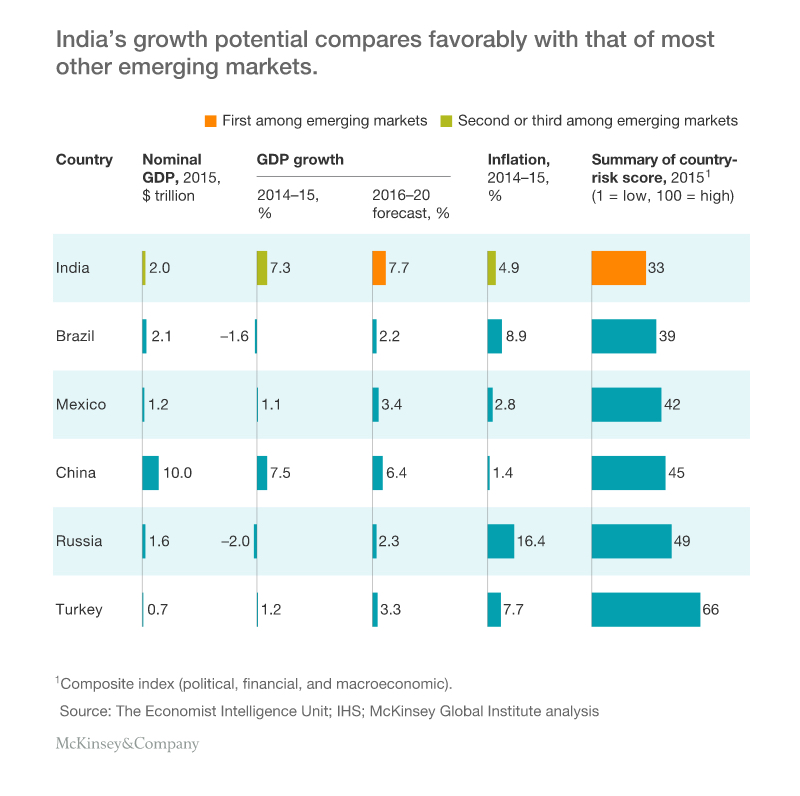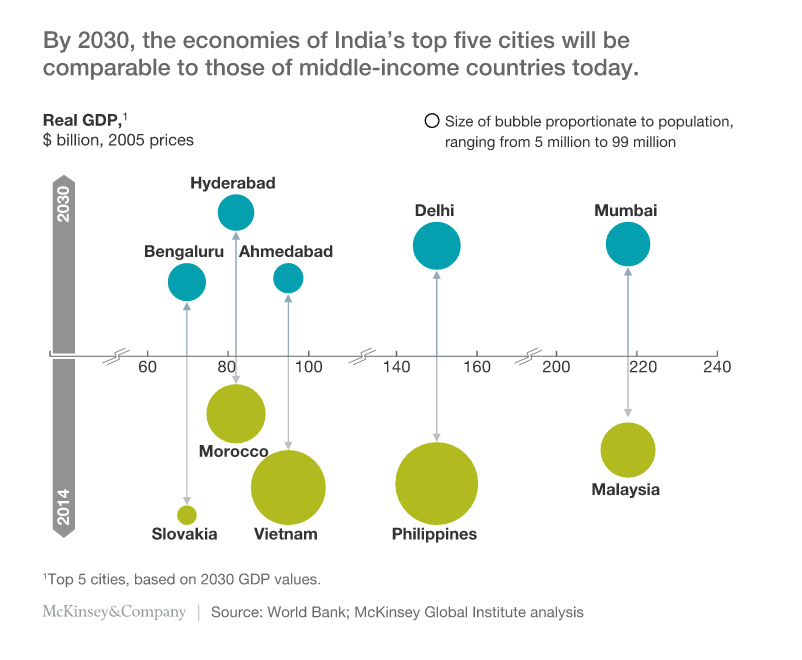CHARTS: Maybe India can ignite new commodity supercycle
According to the World Bank, together the BRIC nations (Brazil, Russia, India and China) consume 40% of global energy and food commodities and over half of the world's metals. China alone accounted for virtually all the increase in metals (aluminum, copper, lead, nickel, tin and zinc) consumption of the BRICs since 1994.
India's consumption of metals almost doubled over the past 20 years. But it's only taken the sub-continent's global share from 1.9% to 3.4% according to the report. By contrast, China's share of worldwide metals consumption went from 6.4% in 1990 to 43.9% last year.
Statistics like these is heartbreaking for those hoping that India, which will likely top China's population in little over a decade from now, can take over from China as the driver of global growth and specifically spark a new supercycle in commodity consumption.
But a new report from McKinsey Global Institute suggests the pessimism regarding India's prospects may be overdone. According to the consultants group India compares well to the BRICs and other sizeable emerging markets like Mexico and Turkey.
The country is progressing on a path of liberalization and, say the authors of the report, the country offers an attractive long-term future "powered largely by a consuming class that's expected to more than triple, to 89 million households, by 2025." Other statistics are also encouraging including a poverty rate that has declined from 45% of the population in 1994 to 22% in 2012.


But it is India's infrastructure build out and urbanization - muck like it was in China - which would really drive metals and mining demand. And as far as urbanization goes India's only getting started. And given the large numbers of people involved it could prove a heady mix:
By 2025, MGI estimates, India will have 69 cities with a population of more than one million each. Economic growth will center on them, and the biggest infrastructure building will take place there. The output of Indian cities will come to resemble that of cities in middle-income nations. In 2030, for example, Mumbai's economy, a mammoth market of $245 billion in consumption, will be bigger than Malaysia's today. The next four cities by market size will each have annual consumption of $80 billion to $175 billion by 2030.


SEE ALSO: What a broad-based metals and mining rally looks like